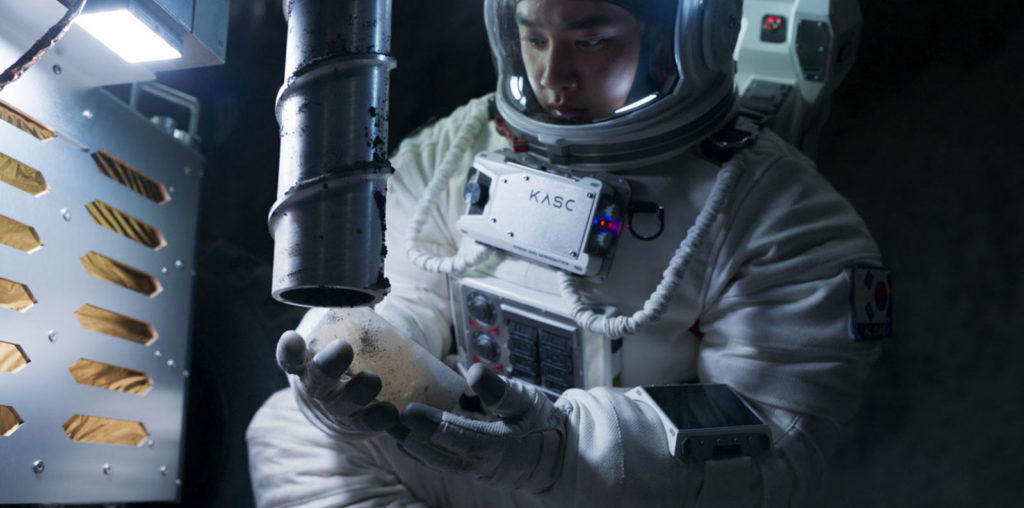
Lester never got the chance to make “Year of the Dragon,” which was later made into an excellent film by director Michæl Cimino. But DeLaurentis was adamant and he had another book he wanted Lester to adapt and this was a Stephen King book. “Firestarter.” “It had been a troubled project for Dino,” recalls Lester of an omen of things to come. “John Carpenter was attached at one point and the budget was set at something like twenty million, and the script he came with was unworkable, so he dropped out and I was the next choice. Then Stanley Mann and I worked on the script.”
When the 15 million dollar “Firestarter” was released in 1984 it was greeted by mostly negative reviews and lackluster box office receipts. Ironically, some of the most outspoken criticism came from King himself. As documented in Fangoria and other publications at the time and even since, King and Lester engaged in a series of bitter verbal wars over the film and how it was made. The whole controversy has left Lester feeling miffed. “The first thing you have to understand when you adapt a King film is I guess that he hates all of the movies,” says Lester. “Look at the movies of his that’s he’s liked. What I couldn’t understand about his reaction to “Firestarter,” was that we were probably more faithful to the book then any of the other films at the time. Everything in the book was in the movie. Everything. Probably to a fault. I think it boils down to the fact that he didn’t script it himself, but early on, he seemed real happy with the direction we were going in. Then, we see this whole clenched fist approach. I didn’t understand it.”
Other than the controversy, filming on “Firestarter” was fairly exhaustive with a long shooting schedule highlighted by dangerous effects and as mentioned, a Stanley Mann script packed with mostly all of King’s plot points, including flashbacks that were problematic. “That shoot must’ve lasted fifty days,” recalls Lester with a laugh. “Actually, none of the actors were in any danger during the shoot, but the stuntmen, they were in continual danger. There was lots of really dangerous stuff. You mention a 15 million dollar budget, everyone thinks ‘Firestarter’ was such an expensive film, but it wasn’t fifteen million, it was more like ten. I think Dino spent the other five on marketing. That’s the way Dino works.”
If “Firestarter” didn’t cost as much as it looked, it certainly boasted an impressive and well populated cast featuring David Keith, Martin Sheen, Art Carney and screen legend George C. Scott, not to mention Lester’s young star, Drew Barrymore. For Lester, the prospect of working with so many big names was a little intimidating at first. “I was nervous about working with George,” recalls Lester. “Partly because he’s such a great actor, but partly because I’d heard of his reputation for being tough on directors. But when he showed up, he just opened his arms and said, I’m all yours. You’re my hero. So he was great. You know, Scott’s character in ‘Firestarter,’ his assassin character was the one character who was changed a lot from the book. In the book I think he only has the one kill. In the film we made it so he’s this really bad guy who’ll kill anybody. George really went over the top with his performance in the film. He was evil.”
Working with young Barrymore was equally as memorable for Lester. “She’d just done ‘ET’ and this film was her first true starring vehicle,” says Lester. “The whole movie was built around her and she was very young so you can imagine the pressure. I thought she was excellent in the film. I mean, it’s a very violent and dark film, and she handled all of her difficult scenes well, and she also was totally convincing with the stuff about her and her powers and the way she created the fire.”
As Lester explains, some of the weird “political thriller” aspects in “Firestarter,” involving government conspiracies and hidden think tanks may have been jazzed up due to DeLaurentis’ own beliefs on government. “You know, one of the first things Dino said was, ‘I want to make an anti-CIA movie,'” recalls Lester with a laugh. “So there you have it. Dino wanted to make an anti-CIA movie and I guess ‘Firestarter’ has a lot of that political paranoia about secret agents killing people and stuff. I know a lot of people think of ‘Firestarter’ as being political science fiction. That was Dino’s idea.”
Though happy with his work on his first studio film, Lester grudgingly concedes that “Firestarter” may have benefited from less subplots, less faithfulness to the novel, which makes it’s nearly two hour running time rush by. “Maybe there was too many characters in the film,” says Lester. “There’s a lot of characters, and you had to introduce them all, and there’s several flashbacks too, so there was a lot to tell the audience, but I thought the film delivered. It wasn’t a great book.”
Following “Firestarter,” Lester made two more big budget films, directing the Arnold Schwarzenegger vehicle “Commando” and the ill received 1986 John Candy-Eugene Levy starrer “Armed and Dangerous.” It was then, after a little break, that Lester decided to return to the scene of his first triumph, when “Class of 1999,” the chronological sequel to “Class of 1984” production.
Get the whole story and read the final part of DIRECTOR MARK LESTER AND THE CLASS OF 2002>>>
